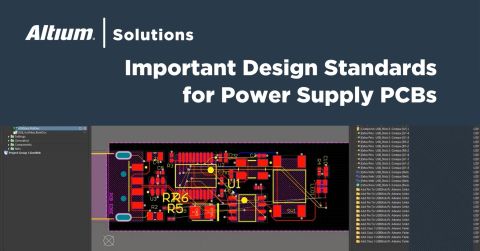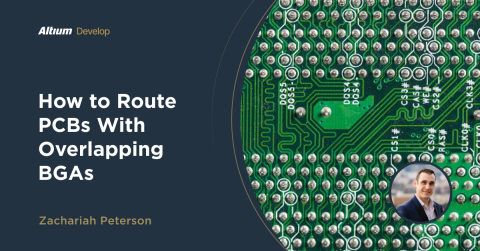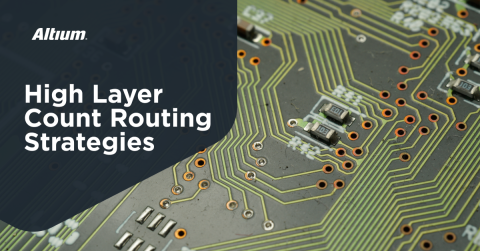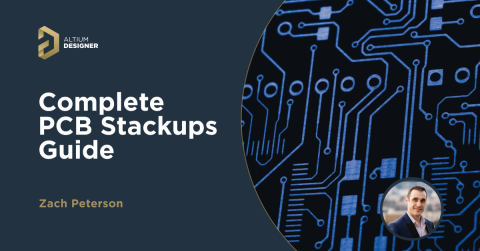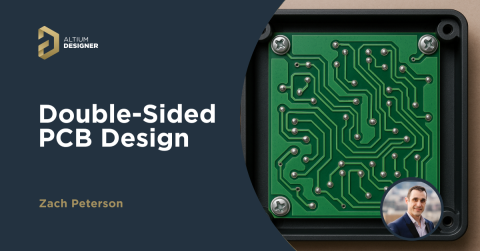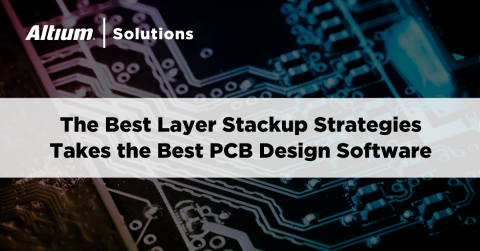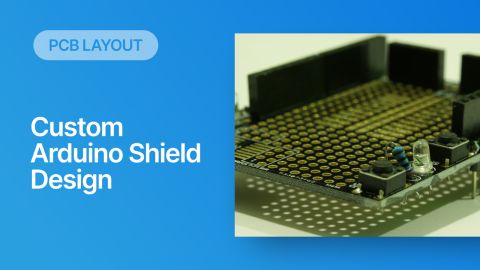Creative Design with Buried Vias in Your Next PCB

Blind and buried vias can be very useful tools in a PCB designer's toolbox. If they are not used correctly, or if they are used in an attempt to save an unsolvable layout, they become something of a crutch that just increases cost when it is not necessary. But when used correctly, both blind and buried vias offer some creative design options in many application areas.
Another type of design that eliminates HDI buildup layers but still gives some routing advantages is to make use of buried vias. Contrary to the typical perception of blind and buried vias, buried vias are not only needed when you need an HDI design. While using sequential lamination to build a stackup with buried vias does increase cost, it enables certain types of designs that could be difficult with standard through-hole builds.
In this article, I'll present some creative uses of buried vias in certain types of stackups and application areas. I think when these options are compared with designs involving through-hole plus blind vias, or with designs involving back drilling, the advantages of using buried vias in certain designs will be quite clear.
Good and Bad Ways to Use Buried Vias
The most common use of a buried via is as a core via, such as you would use in an HDI design. However, with mechanical drilling, these vias can span outside the central core region, and the design rules do not follow the same rules used in standard HDI stackups with build-up film layers. Mechanically drilled blind/buried vias are fabricated using a series of stack-drill-plate steps, and the plate steps limit where blind/buried vias can stop and end in the stackup.
Some of the required design rules are:
- A blind/buried via cannot start on the same layer that another via ends
- These vias cannot cross over each other in the PCB stackup
- A buried via can be embedded in the span of a larger buried via as long as there is no crossover
- Mechanically-drilled blind/buried vias cannot be stacked (this would violate rule #1)
Now that we have examined these design rules, we can look at some ideas for implementing buried vias.
Confined RF Circuits in Internal Layers
Buried vias can be designed to be stubless, which makes them very useful in RF designs involving layer transitions. Although it is conventional wisdom to only keep RF circuits on a single layer as microstrips, there are many examples from real designs where this does not happen. Furthermore, these designs may operate at 10 GHz or higher, and this means stubs on vias could create insertion losses that could fall within an RF system's operating bandwidth.
By using a buried via, the design can keep breadth routing and RF printed circuits in an internal layer and still provide a connection to components on the top and bottom layer with through holes. An example cross-sectional view of a stackup with this configuration is shown below.
In this example, we would need to back drill two vias on either side of the PCB stackup. In this particular type of design, it may be preferable to backdrill the vias rather than add laminations to the stackup with blind vias, particularly from a cost perspective. We then have the benefit of using buried vias to protect the RF circuits because the buried vias will not consume space for components on the top and bottom layers, allowing the component placement to be quite dense if required.
Cap-Core PCB Stackups
There is one type of stackup that can make use of buried vias for routing in internal signal layers without stubs. This stackup is sometimes called a reverse stackup or a cap-core stackup. In this design, we take the traditional approach with outer layer signal routing and invert it so that signals are on an internal layer, much like the surface-GND four-layer PCB stackup:
With a buried via on the inner layer and ground on the outer layers, the buried vias are primarily used for signal routing only between the inner layers. Through-hole vias would then be used to route signals into a component or to stitch the top and bottom ground layers together.
Building this PCB stackup design requires laminating two layers around the central dielectric with the buried via transitions. Multiple laminations bring higher fabrication cost, but the trade-off is much greater freedom of routing between components. By pushing all routing into the internal signal layers with the buried vias for layer-to-layer routing, components could also be placed with much higher density on the surface layers. I like this routing for packaged module designs which require high-density placement of small components.
Eliminating Crossing Blind Vias
When a designer starts hitting density limitations and needs to avoid placing vias completely through the stackup, they usually start using blind vias first. There is nothing wrong with this approach because the blind vias still need to reach a surface layer in order to make connections to components. To reach deeper layers and to potentially confine high-density routing to inner layers, a designer might start crossing blind vias in the interior layers of the PCB.
Unfortunately, blind vias cannot cross each other in the PCB stackup because they cannot be fabricated using mechanical drilling and multi-lamination processing. Because of the stack-drill-plate sequence used to fabricate mechanically drilled blind/buried vias, fabricating blind/buried vias which cross each other would require applying plating to an existing plated via hole/pad at each lamination step, regardless of whether the vias are stacked. The image below shows how we can replace crossing blind vias with a single buried via in the PCB stackup.
By using a buried via between the two blind via endpoints, we can still confine some of the routing to inner layers; this is arguably better because via transitions with the buried via will now not expose a via pad on the PCB surface layer. The tradeoff is that the surface layer can only be reached with a through-hole via, which might be a challenge in some designs.
Buried Vias in Your PCB
Using buried vias can also help you reduce the number of layers required to route all of your traces and/or reduce the overall size of your board. Since these vias only run between inner layers, you’ll have more room to route traces on the surface layers. This is useful when fanning out a BGA. If you're using through-hole vias and your escape routing is taking up too much space, you can reach the inner layers with blind and buried vias and widen the breakout channels.
Blind and buried vias also have a cost trade-off compared to through-hole vias. Blind and buried vias incur higher manufacturing costs per via as the board will require additional machining steps. However, they allow denser routing on the surface layers and can be used to reduce the layer count. This might offset the overall cost of the additional machining steps, depending on how creative you can get with your routing.
Whether you need to build reliable power electronics or advanced digital systems, use the complete set of PCB design features and world-class CAD tools in Altium Designer®. To implement collaboration in today’s cross-disciplinary environment, innovative companies are using the Altium 365™ platform to easily share design data and put projects into manufacturing.
We have only scratched the surface of what’s possible with Altium Designer on Altium 365. Start your free trial of Altium Designer + Altium 365 today.

